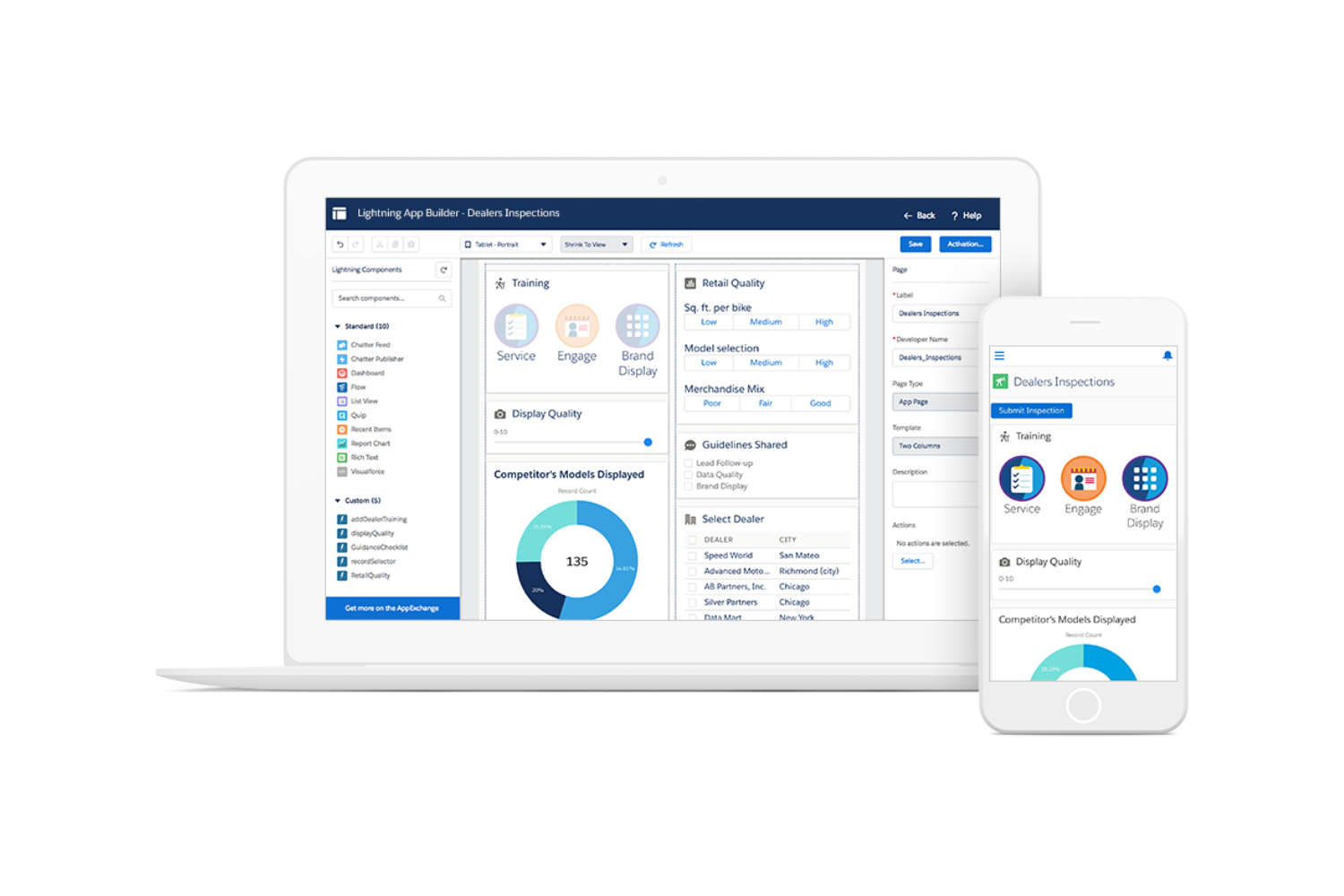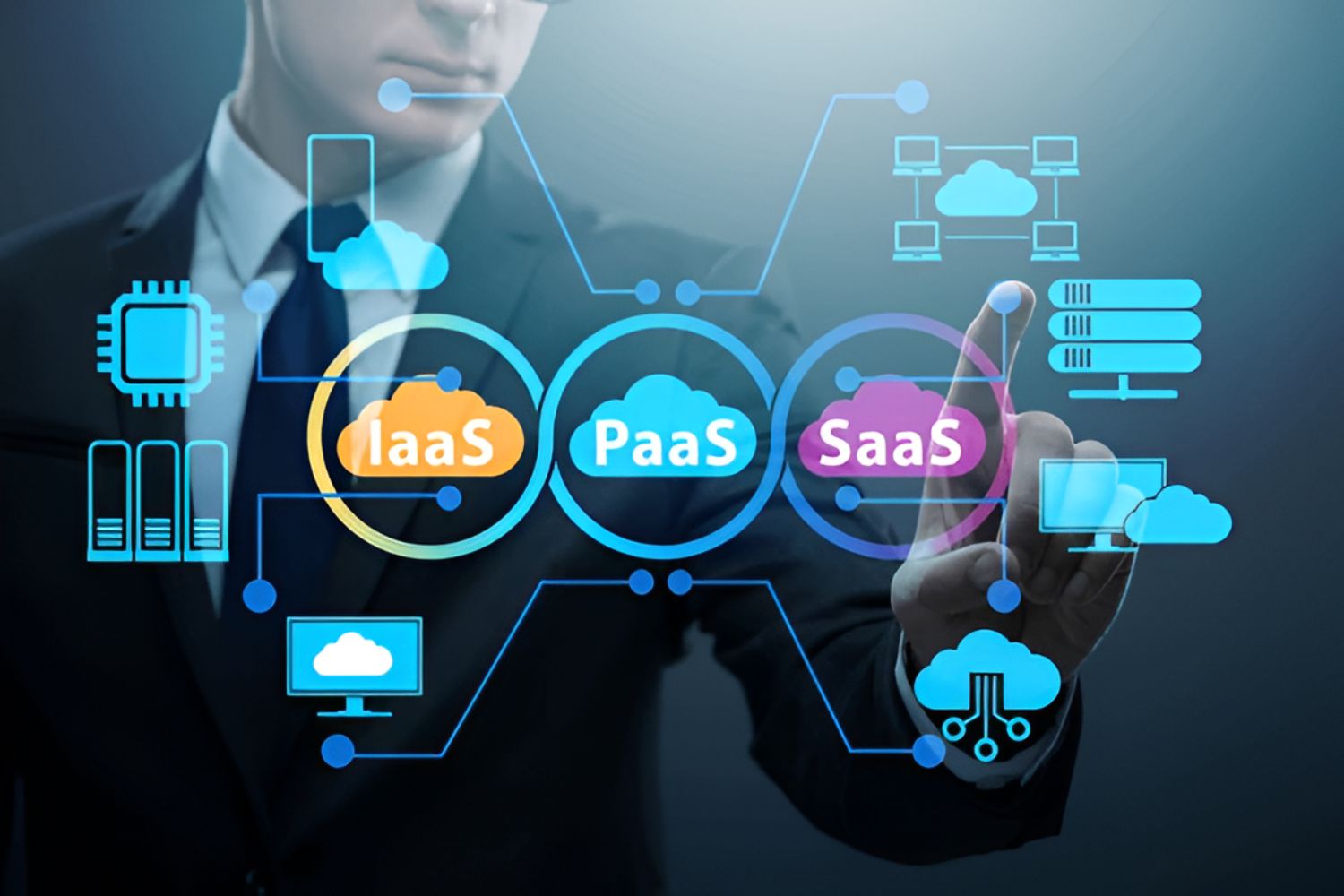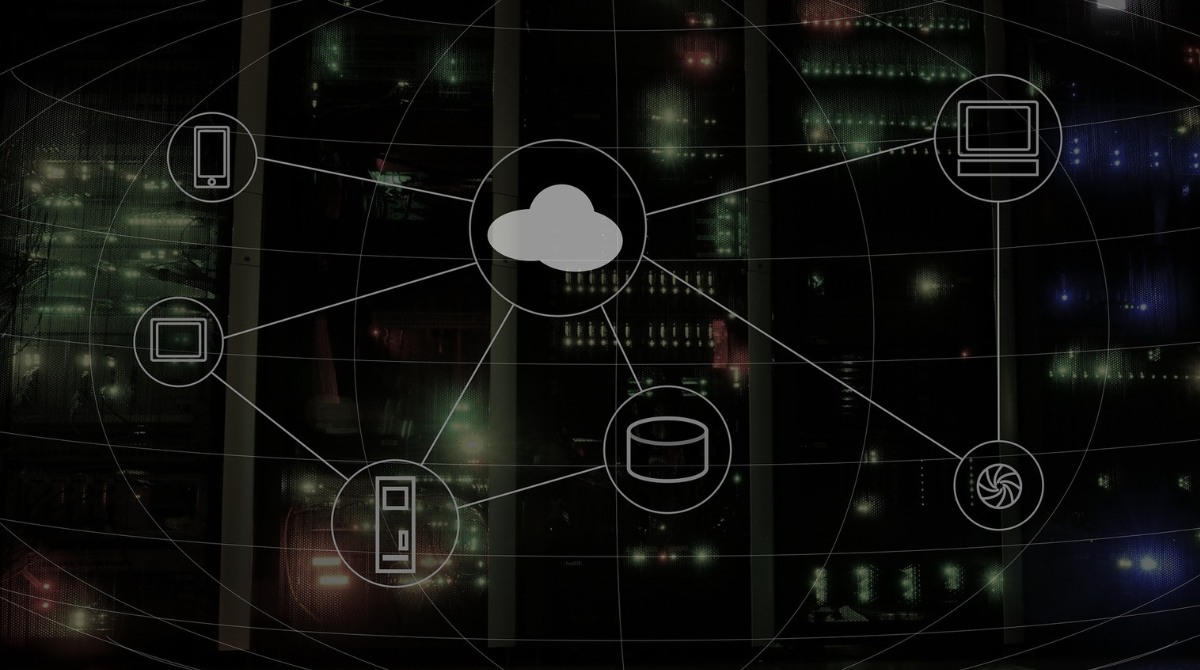Introduction
Welcome to the world of SaaS (Software as a Service) in Salesforce! In this article, we will explore the concept of SaaS and how it relates to the Salesforce platform. SaaS has revolutionized the way businesses operate by providing convenient and cost-effective solutions for various software needs. Salesforce, on the other hand, is a leading customer relationship management (CRM) platform that empowers organizations with its cloud-based services. By combining the power of SaaS and Salesforce, businesses can streamline their operations, enhance customer satisfaction, and achieve their goals more efficiently.
So, what exactly is SaaS? In simple terms, SaaS refers to a software delivery model where applications are hosted in the cloud and accessed by users over the internet. Unlike traditional software installations, SaaS eliminates the need for complex installations, maintenance, and upgrades as everything is managed by the service provider. This allows businesses to focus on their core activities without worrying about the technical aspects of software management.
Now, let’s delve into Salesforce. Salesforce is a cloud-based CRM platform that offers a comprehensive suite of tools and services to manage customer interactions, sales processes, and marketing campaigns. It is known for its scalability, flexibility, and ease of use, making it a popular choice for businesses of all sizes and industries.
When we talk about SaaS in the context of Salesforce, it refers to the software applications and solutions that are built on the Salesforce platform and delivered as a service. These SaaS solutions leverage the capabilities of Salesforce and extend its functionalities to meet specific business requirements. This means that businesses can customize and enhance their Salesforce experience by integrating third-party SaaS applications.
There are numerous benefits of using SaaS in Salesforce. Firstly, it eliminates the need for expensive hardware infrastructure and reduces upfront costs, making it a cost-effective solution for businesses. Additionally, SaaS in Salesforce offers scalability, allowing businesses to easily add or remove features as their needs evolve. Moreover, SaaS solutions in Salesforce are highly secure, ensuring the confidentiality and integrity of business data.
The key features of SaaS in Salesforce include easy integration with existing Salesforce workflows, access to a vast marketplace of pre-built applications, and seamless data synchronization. These features empower businesses to streamline their processes, improve efficiency, and gain valuable insights to make informed decisions.
In the next section, we will explore how SaaS in Salesforce works and delve into common use cases for leveraging this powerful combination. Stay tuned!
Definition of SaaS
Before we dive into the intricacies of SaaS in Salesforce, it’s crucial to understand the concept of SaaS itself. SaaS, short for Software as a Service, is a software delivery model where applications are hosted on a remote server and made available to users over the internet. In this model, users do not need to download or install the software on their local machines. Instead, they access and use the software through a web browser or a client application.
Unlike traditional software licenses, where users purchase a copy of the software and install it on their devices, SaaS operates on a subscription-based model. Users pay a recurring fee to access and use the software, which includes regular updates, maintenance, and customer support. This eliminates the need for businesses to invest in costly hardware infrastructure or employ dedicated IT staff to manage the software.
One of the major advantages of SaaS is its scalability. Users can easily scale their subscription up or down based on their changing needs. Whether it’s adding more users, expanding storage capacity, or accessing additional features, SaaS providers offer flexible pricing plans that can be adjusted to match the growth of the business.
Another key benefit of SaaS is its accessibility. Since the software is hosted in the cloud, users can access it from anywhere with an internet connection. This allows for seamless collaboration among team members located in different offices or even different parts of the world. Additionally, SaaS providers typically offer mobile applications, enabling users to access and use the software on their smartphones or tablets for greater convenience and productivity.
Security is a top priority for SaaS providers. They implement robust security measures, such as data encryption, regular backups, and multi-factor authentication, to ensure the confidentiality and integrity of user data. These security measures are often more stringent than what a typical on-premises software installation can provide, making SaaS a reliable choice for businesses concerned about data protection.
Overall, SaaS offers numerous advantages over traditional software installations, making it a popular choice for businesses of all sizes. Its cost-effectiveness, scalability, accessibility, and enhanced security make SaaS an attractive solution for organizations aiming to streamline their software usage and focus on their core business activities. Now that we have a clear understanding of SaaS, let’s explore how it intersects with Salesforce.
What is Salesforce?
Salesforce is a leading cloud-based customer relationship management (CRM) platform that revolutionizes the way businesses manage their interactions with customers. Founded in 1999, Salesforce has grown to become a powerhouse in the CRM industry, helping organizations of all sizes improve their sales processes, optimize marketing campaigns, and enhance customer satisfaction.
At its core, Salesforce is a comprehensive suite of tools and services designed to centralize customer data, automate business processes, and enable effective collaboration among teams. It offers a range of modules and functionalities that cater to various business needs, including sales, marketing, customer service, and analytics.
One of the key advantages of Salesforce is its cloud-based nature. All the data and applications are hosted on secure servers in the cloud, eliminating the need for businesses to invest in hardware infrastructure or worry about software updates and maintenance. This allows companies to focus on their core competencies while relying on Salesforce to handle the technical aspects.
Another strength of Salesforce lies in its customization capabilities. Organizations can tailor the platform to match their unique business requirements by creating custom objects, fields, and workflows. This flexibility ensures that Salesforce can adapt to different industries and workflows, making it a versatile solution for a wide range of businesses.
Additionally, Salesforce provides a seamless user experience through its intuitive interface and user-friendly design. The platform is built with usability in mind, allowing users to navigate through modules, access data, and perform tasks with ease. Salesforce also offers mobile applications, enabling users to access and manage customer data on the go, further enhancing productivity and efficiency.
One of the standout features of Salesforce is its AppExchange marketplace. Here, users can explore and install a vast array of pre-built applications, both free and paid, that seamlessly integrate with Salesforce. These applications extend the functionality of Salesforce, allowing businesses to further enhance their processes and address specific business needs.
Overall, Salesforce empowers businesses to build stronger customer relationships, streamline sales and marketing processes, and gain valuable insights through its robust CRM functionalities. By leveraging the power of Salesforce, organizations can optimize their operations, boost productivity, and drive growth. In the next section, we will discuss how SaaS integrates with Salesforce to enhance its capabilities even further.
SaaS in the Context of Salesforce
In the context of Salesforce, SaaS (Software as a Service) refers to the software applications and solutions that are built on the Salesforce platform and delivered as a service. These SaaS solutions utilize the capabilities of Salesforce and extend its functionalities to meet specific business requirements.
As a cloud-based CRM platform, Salesforce provides a solid foundation for SaaS applications to integrate and leverage its features. SaaS solutions in Salesforce are developed by third-party vendors and can be easily installed and integrated into the existing Salesforce environment. This integration allows businesses to extend the capabilities of Salesforce and customize the platform to suit their unique needs without the need for extensive coding or development efforts.
The flexibility of SaaS in the Salesforce ecosystem enables businesses to enhance their sales, marketing, customer service, and other processes with specialized applications. For example, a SaaS solution may provide advanced reporting and analytics features, allowing businesses to gain deeper insights into their sales performance or customer behavior. Another SaaS application might focus on automating and streamlining marketing campaigns, enabling organizations to run targeted and personalized campaigns more effectively.
SaaS in Salesforce also caters to niche industries and specialized business requirements. For instance, there are SaaS solutions designed specifically for healthcare, finance, or retail industries, offering industry-specific functionalities and compliance features. These solutions can be seamlessly integrated into Salesforce, aligning the platform with the unique workflows and requirements of the business.
The beauty of SaaS in Salesforce lies in its ability to provide businesses with a wide range of options and flexibility. Companies can choose from a vast marketplace of SaaS applications available in the Salesforce AppExchange, hand-picking the ones that best meet their needs. This allows businesses to create a tailored solution stack, assembling a collection of SaaS applications that work harmoniously with Salesforce to address their specific challenges and achieve their goals.
Furthermore, SaaS in Salesforce ensures compatibility and seamless integration with the existing Salesforce functionalities and data. This means that businesses can leverage the customer data stored in their Salesforce CRM system and use it directly within the SaaS applications. This integration eliminates the need for data duplication or manual synchronization, saving time and minimizing errors.
By incorporating SaaS solutions into the Salesforce ecosystem, businesses enhance the capabilities of the platform and unlock new opportunities for growth and innovation. These SaaS applications not only extend the functionalities of Salesforce but also enable businesses to stay agile, adaptive, and competitive in today’s rapidly evolving business landscape.
Benefits of SaaS in Salesforce
The combination of SaaS (Software as a Service) in Salesforce offers numerous benefits for businesses. By integrating SaaS solutions into the Salesforce platform, organizations can unlock enhanced capabilities, streamline their operations, and drive growth. Let’s explore some of the key advantages of SaaS in Salesforce:
1. Cost-effectiveness: SaaS in Salesforce eliminates the need for businesses to invest in costly hardware infrastructure or employ dedicated IT staff for software maintenance. With SaaS, businesses can access a wide range of applications and services through a subscription-based model, reducing upfront costs and allowing for predictable expenses. This makes SaaS in Salesforce an affordable option for businesses of all sizes.
2. Scalability: SaaS solutions in Salesforce offer scalability, enabling businesses to easily add or remove features as their needs change. With the growth of the business, organizations can scale up their subscription to accommodate more users, storage capacity, or additional functionalities. This flexibility ensures that the software can adapt to the evolving requirements of the business without any disruption.
3. Accessibility and Collaboration: SaaS applications in Salesforce are accessible from anywhere with an internet connection. This allows for seamless collaboration among team members located in different offices or even different regions. Users can access and update data in real-time, promoting efficient communication and teamwork. Additionally, Salesforce offers mobile applications, enabling users to access and use SaaS solutions on their smartphones or tablets, enhancing productivity and flexibility.
4. Security: SaaS solutions in Salesforce are known for their robust security measures. With data encryption, regular backups, and multi-factor authentication, SaaS providers ensure the confidentiality and integrity of user data. These security measures often exceed what a typical on-premises software installation can provide, giving businesses peace of mind knowing that their sensitive information is well protected.
5. Customization: SaaS solutions in Salesforce can be easily customized to match the unique requirements of businesses. The platform allows for the creation of custom objects, fields, and workflows, enabling organizations to tailor the software to their specific processes and workflows. This customization capability ensures that the SaaS applications align with the existing Salesforce setup and accommodate the unique needs of the business.
6. Integration: SaaS solutions in Salesforce seamlessly integrate with the existing Salesforce ecosystem. This integration allows for seamless data synchronization, eliminating the need for manual data entry or data duplication. With the integration of SaaS applications, businesses can leverage the customer data stored in their Salesforce CRM system and use it directly within the SaaS solutions, improving efficiency and data accuracy.
7. Innovation and Agility: SaaS in Salesforce provides access to a vast marketplace of pre-built applications through the Salesforce AppExchange. This enables businesses to easily explore and install new features and functionalities. By leveraging SaaS solutions, organizations can stay innovative, adopt new technologies, and adapt to changing market demands quickly. This agility allows businesses to stay ahead of the competition and drive growth.
Overall, the benefits of SaaS in Salesforce are substantial. It offers cost-effectiveness, scalability, accessibility, security, customization, integration, and opportunities for innovation. Businesses that embrace SaaS solutions in Salesforce can optimize their operations, improve collaboration, and unlock new growth avenues, all while leveraging the power of the Salesforce platform.
Key Features of SaaS in Salesforce
SaaS (Software as a Service) solutions in Salesforce offer a range of key features that enhance the capabilities of the platform and provide businesses with powerful tools to improve their operations. Let’s explore some of the key features of SaaS in Salesforce:
1. Easy Integration: SaaS solutions in Salesforce are designed to seamlessly integrate with the existing Salesforce ecosystem. This means that businesses can easily install and integrate the SaaS applications into their Salesforce environment without complex configurations or coding. The integration allows for a unified user experience and eliminates the need for manual data entry or synchronization.
2. Vast Marketplace: Salesforce offers the AppExchange marketplace, which provides a vast selection of pre-built SaaS applications. This marketplace provides businesses with access to a range of specialized solutions that can address specific business needs. Whether it’s advanced analytics, marketing automation, or customer service tools, the AppExchange has a diverse range of SaaS applications to choose from.
3. Customization Options: SaaS solutions in Salesforce can be customized to match the unique requirements of businesses. The Salesforce platform allows for the creation of custom objects, fields, and workflows, enabling organizations to tailor the SaaS applications to their specific processes and workflows. This customization capability ensures that the SaaS solutions align with the existing Salesforce setup and accommodate the unique needs of the business.
4. Seamless Data Synchronization: SaaS solutions in Salesforce seamlessly synchronize data with the Salesforce CRM system. This means that businesses can leverage the customer data stored in their Salesforce environment and use it directly within the SaaS applications. The data synchronization eliminates the need for manual data entry or data duplication, ensuring data accuracy and improving efficiency.
5. Enhanced Reporting and Analytics: SaaS solutions in Salesforce often provide advanced reporting and analytics functionalities. These features allow businesses to gain deeper insights into their sales performance, marketing campaigns, customer behavior, and more. With robust reporting and analytics capabilities, organizations can make data-driven decisions, identify trends, and optimize their operations for better results.
6. Automation and Workflow Optimization: SaaS solutions in Salesforce offer automation and workflow optimization features. These features enable businesses to automate manual tasks, streamline processes, and improve efficiency. From lead management to customer support, the automation capabilities of SaaS solutions in Salesforce help businesses save time, reduce errors, and improve overall productivity.
7. Scalability and Flexibility: SaaS solutions in Salesforce are designed to be scalable and flexible. As businesses grow and evolve, they can easily add or remove features or adjust their subscription to accommodate changing needs. This scalability ensures that the SaaS solutions can adapt to the evolving requirements of the business without disruptions or additional investments.
These key features of SaaS in Salesforce empower businesses to extend and enhance the capabilities of the Salesforce platform. They promote seamless integration, enable customization, provide access to a wide range of specialized applications, facilitate data synchronization, improve reporting and analytics, automate workflows, and ensure scalability and flexibility. By leveraging these features, businesses can optimize their processes, boost productivity, and achieve their goals more effectively.
How SaaS in Salesforce Works
SaaS (Software as a Service) in Salesforce works by leveraging the cloud-based architecture and capabilities of the Salesforce platform. It involves the integration of third-party SaaS applications into the Salesforce environment, expanding the functionalities and customization options for businesses. Let’s explore how SaaS in Salesforce works:
1. Selection of SaaS Applications: Businesses start by selecting the SaaS applications that align with their specific needs and objectives. These SaaS applications can range from advanced analytics and marketing automation tools to project management and customer service solutions. Salesforce provides the AppExchange marketplace, where businesses can explore and evaluate a wide array of pre-built SaaS applications.
2. Installation and Integration: Once the suitable SaaS applications are chosen, they can be easily installed and integrated into the Salesforce environment. Salesforce ensures seamless integration with these SaaS applications, allowing for data synchronization, unified user experience, and simplified workflows. This integration eliminates the need for complex configurations or manual data entry, enhancing efficiency and accuracy.
3. Customization and Configuration: Businesses can further customize and configure the SaaS applications based on their unique requirements. Salesforce offers a range of customization options, such as creating custom objects, fields, and workflows, allowing organizations to tailor the SaaS applications to their specific processes and workflows. This level of customization ensures that the SaaS solutions seamlessly integrate into the existing Salesforce setup.
4. Data Synchronization: SaaS applications in Salesforce seamlessly synchronize data with the Salesforce CRM system. This means that businesses can leverage the customer data stored in their Salesforce environment and use it directly within the SaaS applications. The synchronization ensures that the data remains consistent and up-to-date across all connected systems, eliminating the need for manual data entry or synchronization.
5. Access and Collaboration: With SaaS in Salesforce, users can access and use the SaaS applications from anywhere with an internet connection. The cloud-based nature of SaaS allows for easy and secure access through web browsers or dedicated client applications. This accessibility promotes collaboration among team members, facilitating real-time data sharing, and improving communication.
6. Maintenance and Upgrades: SaaS applications in Salesforce relieve businesses of the burden of software maintenance and upgrades. The responsibility for maintaining and updating the SaaS applications lies with the service provider. This ensures that businesses always have access to the latest features and enhancements without the need for manual installations or disruptions in operations.
7. Scalability and Flexibility: SaaS applications in Salesforce offer scalability and flexibility to accommodate the evolving needs of the business. With the growth of the business, organizations can easily add or remove features, adjust their subscription, or explore new SaaS applications available in the AppExchange marketplace. This scalability and flexibility enable businesses to stay agile and responsive to changes in their industry or market.
Overall, SaaS in Salesforce works by integrating third-party SaaS applications into the Salesforce platform, providing businesses with extended functionalities, customization options, and seamless data synchronization. With the cloud-based architecture and comprehensive features of Salesforce, businesses can leverage SaaS solutions to optimize their processes, enhance collaboration, and drive growth.
Common Use Cases for SaaS in Salesforce
SaaS (Software as a Service) in Salesforce offers a wide range of use cases that cater to various business needs and industries. By leveraging SaaS applications within the Salesforce platform, businesses can enhance their operations, improve efficiency, and drive growth. Let’s explore some of the common use cases for SaaS in Salesforce:
1. Sales Enablement: SaaS applications in Salesforce can be used to enhance the sales process, improve lead management, and drive revenue growth. These applications provide sales teams with tools to track leads, manage opportunities, automate quotes, and streamline the overall sales workflow. With SaaS solutions integrated into Salesforce, businesses can improve sales efficiency, provide better customer experiences, and close deals more effectively.
2. Marketing Automation: SaaS applications in Salesforce enable businesses to automate marketing campaigns, manage customer journeys, and analyze campaign effectiveness. These applications offer features like email marketing automation, lead scoring, campaign tracking, and personalized content management. By leveraging marketing automation SaaS solutions within Salesforce, businesses can streamline their marketing processes, generate more qualified leads, and deliver targeted messaging to their customers.
3. Customer Service Management: SaaS applications in Salesforce can enhance customer service management by providing tools for case management, knowledge base management, and self-service portals. These applications enable businesses to efficiently track and resolve customer issues, provide timely support, and create a seamless customer service experience. With SaaS solutions integrated into Salesforce, businesses can improve customer satisfaction, drive loyalty, and reduce support costs.
4. Analytics and Reporting: SaaS applications in Salesforce offer advanced analytics and reporting capabilities to gain valuable insights from sales, marketing, and customer data. These applications provide real-time dashboards, customizable reports, and data visualization tools. By integrating analytics SaaS solutions into Salesforce, businesses can make data-driven decisions, identify trends, and optimize their strategies for better results.
5. Project and Task Management: SaaS applications in Salesforce can enhance project and task management by providing tools for project planning, task assignment, and collaboration. These applications offer features like project timelines, task tracking, document sharing, and team communication. With SaaS solutions integrated into Salesforce, businesses can streamline project management, improve team collaboration, and ensure timely completion of tasks and projects.
6. Field Service Management: SaaS applications in Salesforce can optimize field service management by providing tools for scheduling, dispatching, and tracking field service technicians. These applications offer features like real-time location tracking, work order management, and route optimization. With SaaS solutions integrated into Salesforce, businesses can enhance field service efficiency, improve response times, and deliver exceptional service to their customers.
7. Industry-Specific Solutions: SaaS applications in Salesforce cater to specific industries, offering industry-specific functionalities and compliance features. For example, there are SaaS solutions tailored for finance, healthcare, manufacturing, and nonprofit sectors. These industry-specific SaaS applications integrated into Salesforce can help businesses address industry-specific challenges, adhere to regulations, and streamline their operations effectively.
These are just a few examples of the common use cases for SaaS in Salesforce. The flexibility and versatility of SaaS solutions within the Salesforce platform allow businesses to customize and integrate a wide range of applications to meet their unique needs. By leveraging SaaS in Salesforce, businesses can optimize their processes, drive efficiency, and achieve their goals more effectively.
How to Choose the Right SaaS Solution in Salesforce
Choosing the right SaaS (Software as a Service) solution in Salesforce is crucial for businesses, as it can directly impact their efficiency, productivity, and growth. With numerous options available, making an informed decision is essential. Here are some key factors to consider when choosing the right SaaS solution in Salesforce:
1. Identify your business needs: Start by identifying the specific needs and requirements of your business. Determine the pain points or areas where you need improvement. Whether it’s sales, marketing, customer service, or analytics, having a clear understanding of your business needs will help you narrow down your options and focus on the relevant SaaS solutions.
2. Evaluate features and functionalities: Consider the features and functionalities offered by the SaaS solutions. Make a list of the must-have features and prioritize them based on their importance to your business. Look for SaaS solutions that align with your requirements and offer advanced capabilities that can help you achieve your goals more effectively.
3. Check integration options: Ensure that the SaaS solution seamlessly integrates with the Salesforce platform. It should be able to easily integrate with your existing Salesforce environment, enabling data synchronization and a unified user experience. Integration capabilities are crucial to ensure smooth workflows and avoid any disruptions or complexities.
4. Consider customization options: Assess the level of customization that the SaaS solution offers. Consider your unique business processes and workflows and determine whether the SaaS solution can be tailored to your specific needs. Look for SaaS applications that allow you to create custom objects, fields, and workflows within Salesforce, ensuring that the solution can adapt to your evolving requirements.
5. Evaluate user experience: User experience plays a vital role in the effectiveness and adoption of a SaaS solution. Look for a solution that offers an intuitive and user-friendly interface. Consider factors such as ease of navigation, responsiveness, and overall usability. A positive user experience will contribute to better user adoption and productivity.
6. Assess vendor reputation and support: Research the reputation and track record of the SaaS solution vendor. Look for customer reviews, testimonials, or case studies to gauge their reliability, performance, and customer satisfaction. Additionally, evaluate the level of customer support provided by the vendor. Responsive and knowledgeable support can greatly assist in resolving any issues or providing assistance when needed.
7. Consider scalability: Assess the scalability of the SaaS solution. Consider the future growth plans of your business and whether the solution can scale accordingly. It should be able to accommodate increased data volumes, user counts, and additional features. Scalability ensures that the SaaS solution can grow with your business without the need for frequent transitions or replacements.
8. Evaluate pricing and value: Finally, consider the pricing model and value proposition of the SaaS solution. Determine the cost-effectiveness of the solution based on the features, functionalities, and support provided. Compare pricing plans, subscription options, and any additional costs, such as implementation or training. Choose a solution that offers the best value for your investment.
By considering these factors, businesses can make an informed decision when choosing the right SaaS solution in Salesforce. Carefully evaluating the features, integration options, customization capabilities, user experience, vendor reputation, scalability, and pricing will ensure that the chosen SaaS solution aligns with the specific needs and objectives of the business.
Conclusion
SaaS (Software as a Service) in Salesforce brings together the power of cloud computing and the capabilities of the Salesforce platform to provide businesses with enhanced functionalities, flexibility, and scalability. By integrating SaaS solutions into Salesforce, businesses can streamline their operations, improve efficiency, and drive growth.
In this article, we have explored the concept of SaaS and its significance in the context of Salesforce. We’ve discussed the benefits of SaaS in Salesforce, including cost-effectiveness, scalability, accessibility, security, customization, integration, and opportunities for innovation. We’ve also highlighted key features of SaaS in Salesforce, such as easy integration, a vast marketplace of applications, customization options, seamless data synchronization, enhanced reporting and analytics, automation and workflow optimization, and scalability.
Additionally, we’ve examined common use cases for SaaS in Salesforce, including sales enablement, marketing automation, customer service management, analytics and reporting, project and task management, field service management, and industry-specific solutions. These use cases demonstrate the versatility and applicability of SaaS in different business scenarios.
Lastly, we provided guidance on how to choose the right SaaS solution in Salesforce, highlighting the importance of identifying business needs, evaluating features and functionalities, checking integration options, considering customization options, assessing user experience, evaluating vendor reputation and support, considering scalability, and evaluating pricing and value.
In conclusion, SaaS in Salesforce offers businesses a multitude of benefits, opportunities, and possibilities. By leveraging the power of SaaS within the Salesforce platform, businesses can optimize their operations, improve collaboration and communication, and achieve their goals more efficiently. It is essential for businesses to carefully evaluate their needs, assess available options, and select the right SaaS solution that aligns with their requirements and objectives. With the right SaaS solution in Salesforce, businesses can unlock their full potential and stay competitive in the dynamic and rapidly evolving business landscape.

























